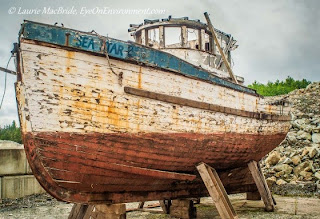 |
| PHOTO: Laurie MacBride |
New blog: It’s hard to take seriously a tropical storm named Flossie but Hawaii state authorities made sure everyone paid attention before Flossie reached the Big Island on Monday... In Flossie’s Aftermath
If you like to watch: Camera Captures Birth of Baby Seal at Elliott Bay Marina
The harbor seals at the Seattle Aquarium have new digs. "This summer we opened a brand new harbor seal exhibit and it's got so many cool features. Deeper water, an acrylic surround for people to see, and it seats 100 people so they can really sit and spend time with our seals," said biologist Traci Belting. New digs for Seattle Aquarium's harbor seals
Vancouver Aquarium is asking the public not to handle seal pups found on B.C.'s beaches, after a Vancouver Island woman posted video of herself petting a pup online. Heather Marshall noticed the seal pup's mother had not returned to Nanoose Bay for two weeks, and after seeing the pup grow sick, decided to rescue it. Marshall did report the rescue to Vancouver Aquarium, but later came under fire from the public for taking in the sick pup and petting him while he was in her care. Some solo seal pups don't need rescuing
Stephan Michaels and Fred Felleman opine: Puget Sound's health is at risk if Washington becomes the fossil fuel gateway to Asia. President Obama says he's open to "better ideas." Time for state leaders to give him some. Exporting Pollutants: No way to reduce a carbon footprint
Now, your tug weather--
WEST ENTRANCE U.S. WATERS STRAIT OF JUAN DE FUCA- 900 PM PDT TUE JUL 30 2013
WED
W WIND TO 10 KT...BECOMING NW 5 TO 15 KT IN THE AFTERNOON. WIND WAVES 2 FT OR LESS. NW SWELL 2 FT AT 7 SECONDS. PATCHY FOG IN THE MORNING.
WED NIGHT
W WIND 5 TO 15 KT. WIND WAVES 2 FT OR LESS. NW SWELL 2 FT AT 7 SECONDS.
--
"Salish Sea News & Weather" is compiled as a community service by Mike Sato. To subscribe, send your name and email to msato@salishseacom.com. Your email information is never shared and you can unsubscribe at any time.
Salish Sea News: Communicate, Educate, Advocate
Follow on Twitter.
Salish Sea Communications: Truth Well Told










